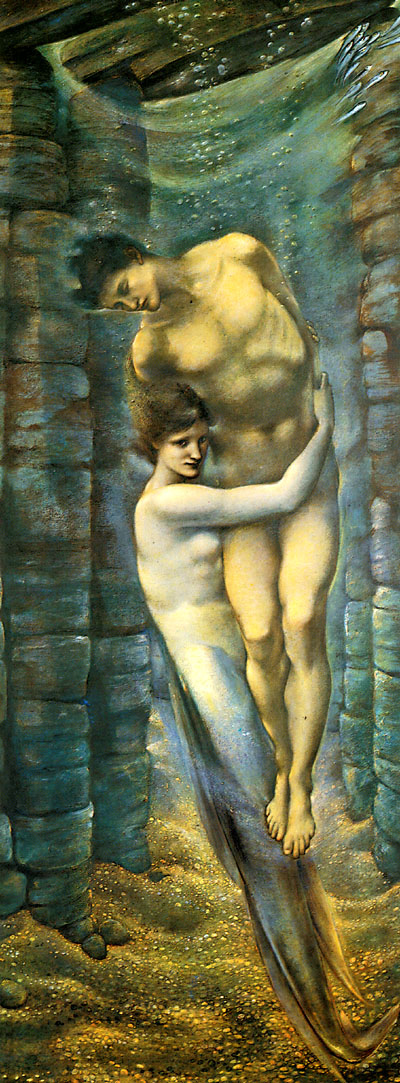In this mythological painting by artist Sir Edward Burne-Jones, who hails from Britain, a mermaid is pulling a dead man's body deeper into the sea. The mermaid has a half-human, half fish physique with well-defined muscles. She grips tightly to the man's torso while her hair curls on the man's shoulder. It is thought that the painting is more than just a display of exemplary painting skill.
A psychological perspective involving attraction, fear and desire can be seen. Georgiana, Burne-Jones' wife, associated the mermaid's face with Laura Lyttleton, commonly referred to as The Siren, who was famous for the ability to charm those who came into contact with her. The stone pillars in the background, the sand at the bottom of the sea, and the wooden like cover at the top create a feeling of entrapment rather than depth of the sea. Burne-Jones determination led him to borrow a large glass tank from fellow artist Henry Holiday. He filled the glass tank with water and simulated a sea environment that he used as a guide for the painting.
The original painting of the depths of the sea which was on display in 1886 and is currently in private possession. In 1887, a copy of the painting in watercolour and gouache was produced. The painting is on a wove paper attached to a panel. The painting is associated with the period of symbolist movements of the 19th century which were known to portray certain moods, ambiguity and definite meanings. Burne-Jones himself described the painting as indefinite and suggestive. His intention was to allow for speculations leading to questions of what could have happened? and what happens next?
The painting of a half-male, half-female character Edward Burne-Jones is similar to his other artworks. His artworks have a common portrayal of dangerous, seductive women who were vibrant in a strict moral environment which also relates to Pre-Raphaelites art ideals. These women who sparked a sense of fear and fascination were widely represented in visual arts. The painting can be found at the Harvard Art Museums/Fogg Museum located at Harvard University, Massachusetts. The original size of the watercolour painting is 197 by 76 cm.




